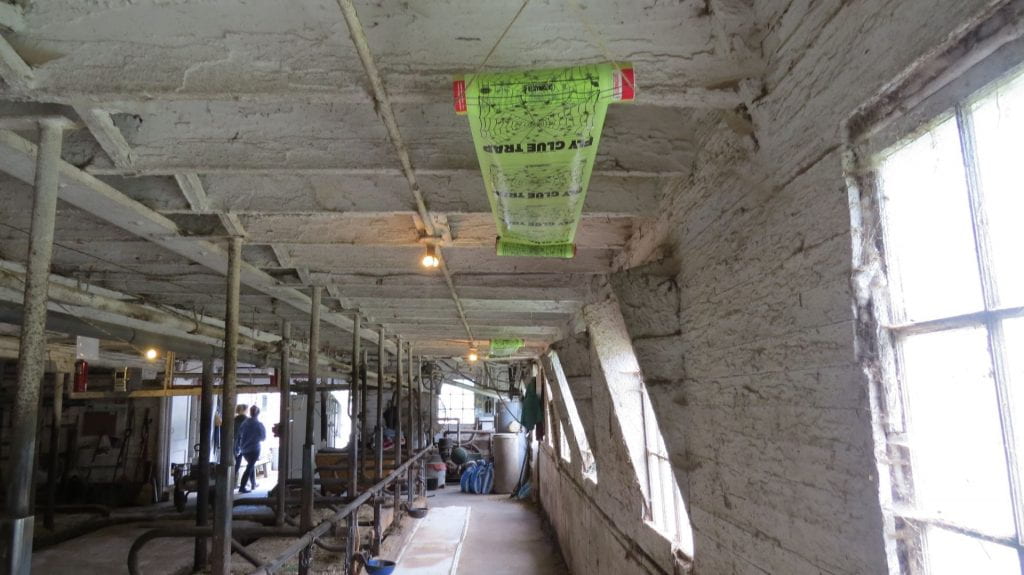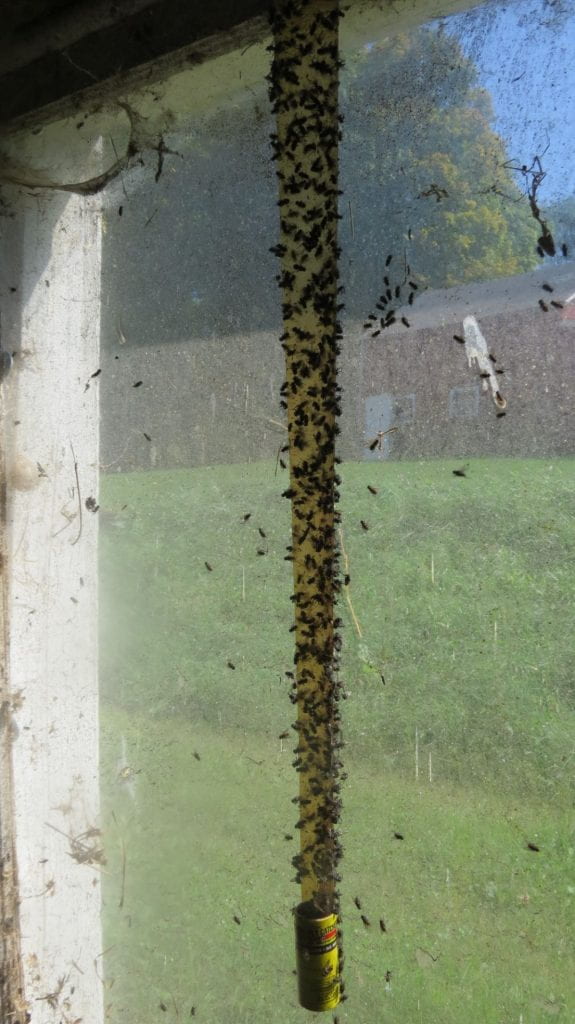NYS IPM Weekly Field Crops Pest Report, September 25, 2020
View from the Field
The growing season is coming to a close and we have reached the end of our 19th season of the NYS IPM Weekly Field Crops Pest Report. We would like to thank all the producers, extension educators and field crop consultants for providing us with in-field observations each week for the report. Your data is critical to us for providing information statewide each week on the status of pests in the field. We will be posting an end of the season survey to determine what impact the report has had statewide. This survey helps us fine-tune the report each year. Please make any suggestions on how we might be able to improve the report. This coming winter we will publish some IPM information via this blog site.
House Flies in Dairy Barns
Houseflies in dairy barns are increasing as the nights start to get cooler. Inside the barn is warmer than being out of the barn. While houseflies do not bite, they do annoy cattle and can transmit diseases. Remember that SANITATION is the key to reducing the population around the barns. ANY AREA that has moist for organic matter rotting on the ground like: hay, feed and straw can produce 1000s of flies.
You can use sticky fly glue traps in the barn to aid in controlling the flies. Such as Catchmaster 930 Spider Web Fly Glue Trap hung in the rafters. This can catch more than 100,000 flies each.
Also, place fly glue strips in places that might have a lot of flies in certain areas of the barns like the windows, feeding areas in the milk house, etc.
There is also the string glue trap:
Clipboard Checklist
Keith Waldron, NYS IPM
General
*Walk fields to check general field condition, weed, vertebrate and other issues
*Watch for crop maturity, stand assessments, weed escapes, nutrient deficiencies, lodging issues
*Update crop records and field history
Alfalfa:
*Monitor potato leafhopper, foliar, systemic and crown rot diseases, signs of alfalfa snout beetle (in counties where ASB has been confirmed).
*Monitor new seedings for potato leafhopper, pythium blight, phytopthora root rot.
*Evaluate established legume stands for health, productivity and potential rotation. Days until harvest
Small Grains:
*Plant winter small grains after the Hessian Fly Free Date.
*Monitor small grain seedings for stand counts, establishment issues
Corn:
*Monitor late-season corn pests including European corn borer, corn rootworm, western bean cutworm, slugs, foliar diseases such as northern corn leaf blight and gray leaf spot, ear molds, stalk strength/lodging potential, weed issues, nutrient deficiencies, vertebrate damage.
Soybeans:
*Monitor for growth stage, soybean aphid, defoliators, foliar diseases, white mold, weed issues, vertebrate damage
*Record diseases present, location and types of weed escapes
Pastures:
*Check water sources, mend fences as needed.
*Check crop growth, clip pastures between grazing as needed
*Monitor for invasive species, plants harmful to livestock
*Review/Plan rotations
Storage:
*Check stored grain bins for temperature, moisture and signs of mold and insects. Aerate, core, transfer grain or treat as necessary
*Clean and disinfect empty storage bins in preparation for grain harvest
*Mow around storage bins and facility to minimize pest hiding places
Dairy Cattle Barn Fly Management:
*Expect an increase in fly numbers in barns as flies seek warmer habitats to escape cooler outside temperatures.
*Monitor animals and barn area for house fly, stable fly and other pest management needs including presence of rodents and birds.
*Check facilities for favorable fly breeding conditions: (organic matter + moisture): leaks in watering systems, roof gutters for leaks and potential overspill, drainage,
*Sanitation, sanitation, sanitation – clean animal resting areas, feed troughs, minimize source of moist organic matter i.e. fly breeding areas in barn and in adjacent animal loafing yard
* Continue fly monitoring: install “3X5″ index card fly speck monitoring cards throughout barn
*Use, replenish, replace fly management materials: sticky fly tapes/ribbons, insecticide baits, natural enemies (parasitoids), fly population monitoring (3 x 5) spot cards
Dairy Cattle on Pasture:
*Monitor animals for presence of face flies, horn flies and stable flies. Action guidelines: face flies (average 10 per animal face), horn flies (average 50 / dairy per animal side, 200 / beef cattle per animal side), stable flies average 10 per animal (all four legs)
*Check feed bunk/water source locations for signs of stable fly breeding (moist undisturbed organic matter – spilled feed, round bales, etc.), minimize source of moist organic matter i.e. fly breeding areas in barn and in adjacent animal exercise yard.
*Check pasture for forage quality / quantity, rotate as appropriate
*Check pasture for vegetation poisonous to livestock
*Consider use of pasture fly traps to help reduce deer, horse and stable fly populations
*Plan to remove insecticide ear tags in fall to reduce risk of developing insecticide resistance



